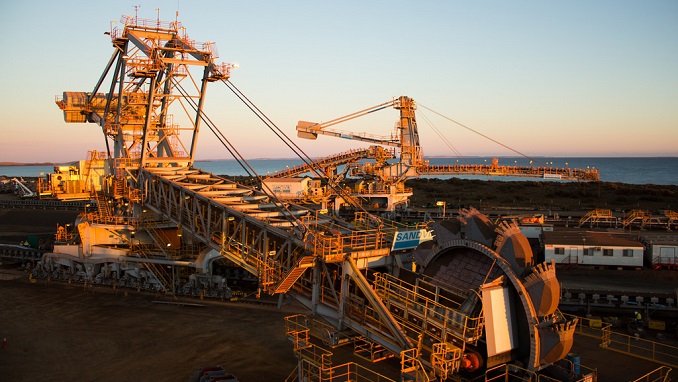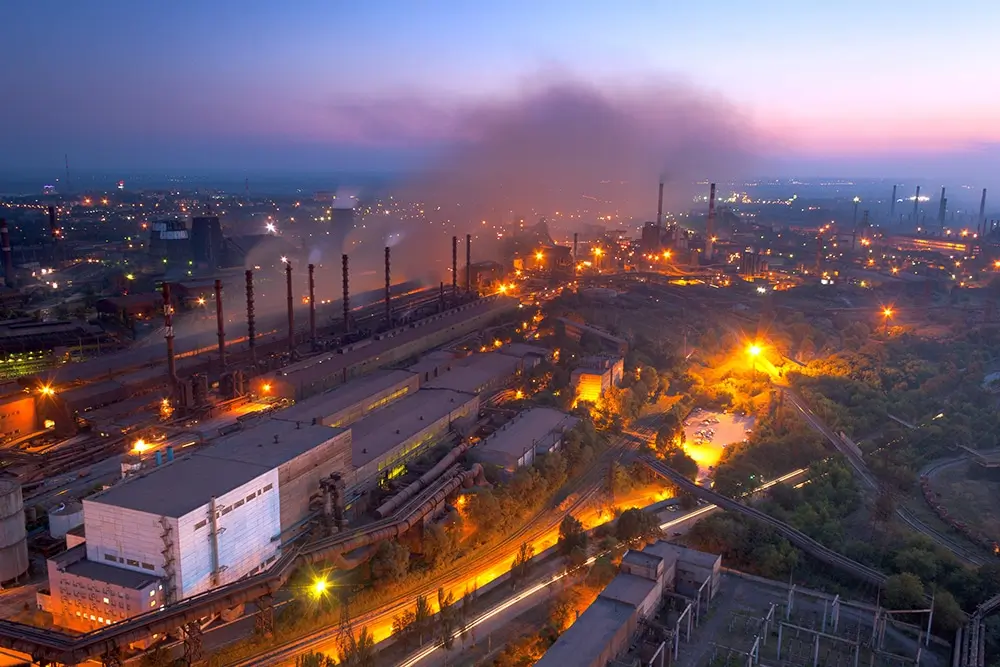Ukrainian metals and mining group Metinvest recently reported a 31% decrease year on year in its crude steel production for 2023, citing Russia’s ongoing invasion of the country. The company halted steel manufacturing activities at its assets in Mariupol, Avdiivka, and Zaporizhzhia two years ago. This includes the Azovstal, Ilyich Steel, Avdiivka Coke, and Zaporizhzhia coking facilities.
In total, crude production for the 12 months ending on December 31 2023 came to 2.02 million metric tonnes. Metinvest noted that this reflects a decrease of 893,000 metric tonnes from almost 2.92 million metric tonnes poured in the previous year. However, Dnipro-based Kamet Steel helped to offset the decrease, and was the only listed asset in the report producing crude steel.
Data shows that the steel manufacturing plant saw a one-third increase in its crude production from 1.56 million metric tonnes. Kamet Steel can pour up to 3.5 million metric tons of crude steel per year, which it casts into square and round billet for commercial sale and for rolling into 1.8 million metric tons of long products.

At a conference in 2022, Metinvest General Director Yuriy Ryzhenkov also noted that the company has lost over 40% of its capacity due to the ongoing conflict. “The group’s plants in Ukraine, apart from those in Mariupol and Avdiivka, continue to operate at different capacity utilization levels, subject to security, personnel, electricity, logistics, and economic factors,” Metinvest added.
The latest figures do not include Zaporizhstal, as that plant is a joint venture in which Metinvest owns 49.9% of shares. Guernsey-registered Midland Group reportedly owns the remaining stake. Information on the steelmaker’s site showed that plant poured a total of 228,600 metric tonnes in 2023, up more than threefold from 70,700 metric tonnes in 2022. “Restart of blast furnace No. 2 and the establishment of an operating mode for three blast furnaces are behind the increased production in December 2023 compared to December 2022,” the company noted.
The Continues to Take a Toll on Ukrainian Steel Manufacturing
The Azovstal and Ilyich plants, both located in Mariupol, went off stream in 2022. The former was also the target of heavy shelling by Russian forces after Ukrainian military and civilians sought refuge there.
One industry watcher believes that Azovstal suffered too much damage to reopen, but stresses that Metinvest technicians will need to enter the site and conduct a full examination of the plant’s physical condition. The damage to Azovstal was also behind the 19% drop in total semifinished production, which Metinvest noted was 832,000 metric tonnes from 1.02 million metric tonnes.

However, Kamet Steel’s production helped to offset this. Billet production also rose 10% to 175,000 metric tonnes from 159,000 metric tonnes on increased orders.
Further downstream, the shutdown of the steelmakers at Mariupol also saw flat-rolled production decline by more than one-third. Reports indicate that the figure reportedly reached 1.1 million metric tonnes in 2023, down from 1.73 million metric tonnes in the previous year. Nonetheless, increased production at Metinvest assets in the UK and Italy, along with higher slab supply from Zaporizhstal, helped offset these decreases.
Metinvest’s Rebar Production Soars 17%
Steel manufacturing stabilization at Kamet Steel and normalization of billet supplies at Metinvest’s Promet plant in Bulgaria helped to raise Metinvest’s rebar production 17%, from 1.02 million metric tonnes in 2022 to 1.19 million metric tonnes. Meanwhile, the August opening of a corridor on the Black Sea for merchant ships sailing to and from Ukraine also led to the resumption of seaborne exports.
According to reports, this allowed the company “to begin gradually increasing the capacity utilization of its mining and processing plants. In particular, Metinvest ramped up production at Ingulets GOK and Northern GOK, as well as the use of iron ore from third parties to produce concentrate at Central GOK.”

Data further showed that iron ore concentrates with greater than 67% and less than 67% iron contents fell 14% year on year to 4.07 million metric tonnes from 4.71 million metric tonnes. However, production volumes more than doubled quarter-on-quarter, totaling 1.84 million metric tonnes. For comparison, Q3 saw production volumes reach 746,000 metric tonnes.
Meanwhile, year on year production of the upstream product was down 14% to 4.07 million metric tonnes from almost 4.72 million metric tonnes. However, pellet production rose two-thirds year on year, totaling 5.28 million metric tonnes.
By: Christopher Rivituso






